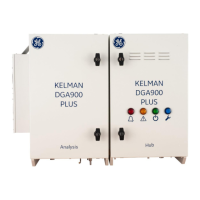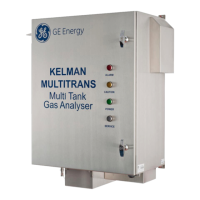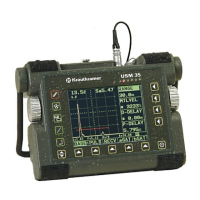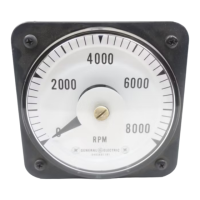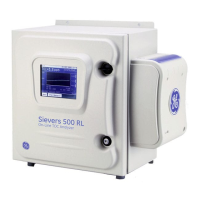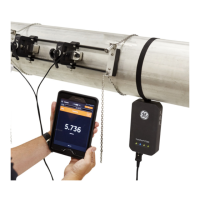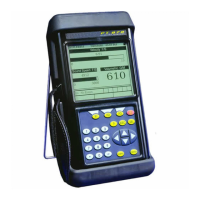MA-025 – DGA 900 Operator Guide – Rev 2.0 12-Apr-19 Page 89 of 92
transformer (4,000 l oil), the same 1 ppm/day gas increase means a ROC of 4 ml/day. In
either case there is a defect, but in the larger transformer the defect is much more severe.
E.4.1 Using Oil Volume
It is strongly recommended to use ROC in ml/day. Convert the ppm/day figure to ml/day
based on the oil volume or weight:
1)
Transformer owner may calculate ROC in ml/day by using following formula (IEC 60599):
2)
( )
( )
dayml
dd
myy
ROC /
12
12
−
−
=
where:
▪ y
1
is the last reading, in ppm;
▪ y
2
is the previous reading, in ppm;
▪ m is the oil mass / weight, in kilograms;
▪ ρ is the oil density, in kilograms per cubic metre;
▪ d
1
is the date of y
1
, and
▪ d
2
is the date of y
2
.
Note: This is a very generic formula. As Kelman
®
equipment readings are taken every
day, then (d
2
– d
1
) = 1
E.4.2 Using Oil Mass
Should the transformer owner use oil mass instead of oil volume, then ρ = 1,000. Thus,
formula can be simplified to:
3)
where:
▪ (y2 – y1) is the difference between two consecutive readings in 24 hours, in ppm
▪ M is the oil mass, in metric tons
Note: Pay attention to the units of measure.
▪ In formula 2), oil density is given in kilograms per cubic metre, thus typical oil density is
about 960 kg/m3.
▪ In formula 3), gas concentration is given in ppm and oil mass is given in metric tons).
If using ROC in ml/day, use Table E-3 to set ROC alarms:

